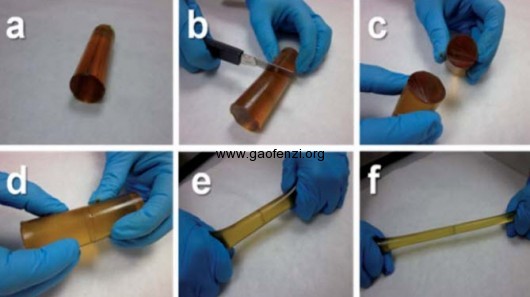自修复材料(self-healing materials),智能材料的一种,近年受到材料研究人员的追捧。可以这样简单地这样理解这种材料:外力将材料分成两段,当将分开的两部分在相互接触时又重新恢复到完整的状态。如下图

(图片来源下面的第一篇文献)关于自修复材料的原理请阅读以下两篇文章:
1、
标题:Catalyst-free room-temperature self-healing elastomers based on aromatic disulfide metathesis
作者:Alaitz Rekondo,Roberto Martin,Alaitz Ruiz de Luzuriaga,Germán Cabañero,Hans J. Grandea and Ibon Odriozola
摘要:
Aromatic disulfide metathesis has been reported as one of the very few dynamic covalent chemistries undergone at room-temperature. Here, bis(4-aminophenyl) disulfide is effectively used as a dynamic crosslinker for the design of self-healing poly(urea–urethane) elastomers, which show quantitative healing efficiency at room-temperature, without the need for any catalyst or external intervention.
文献链接:DOI: 10.1039/C3MH00061C
2、《先进材料》上的一篇文章

(图片来源下面的文献)
标题:Adaptable Hetero Diels–Alder Networks for Fast Self-Healing under Mild Conditions
作者:Kim K. Oehlenschlaeger等等
摘要:
A novel adaptable network based on the reversible hetero Diels–Alder reaction of a cyanodithioester and cyclopentadiene is presented. Reversible between 50–120 °C, the adjustable and self-healing features of the network are evidenced via temperature dependent rheology experiments and repetitive tensile tests whereas the network’s chemical structure is explored by temperature dependent 1H MAS-NMR spectroscopy.
文献链接:DOI: 10.1002/adma.201306258